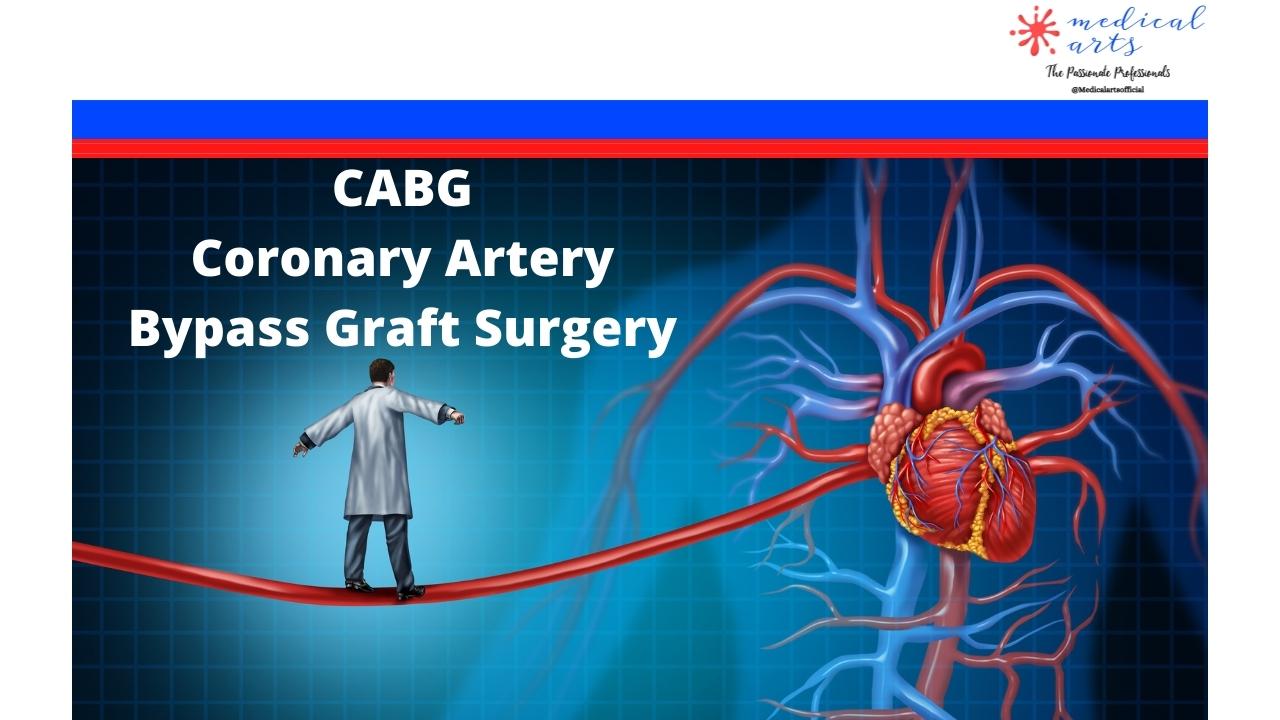Coronary Artery Bypass Surgery
Coronary artery bypass surgery also called coronary artery bypass grafting or (CABG) is a surgical procedure used to treat coronary Artery disease.
The coronary arteries are the blood vessels that carry blood to your heart. The blood in these arteries supplies oxygen and nutrients to your heart.
There are two coronary arteries: a left and a right coronary artery, each of which is further divided into fine branches.
Healthy coronary arteries are smooth and elastic. However, these arteries, can become narrowed and hardened over time due to the buildup of fatty deposits known as plaques. This process is known as atherosclerosis.
People with atherosclerosis of the coronary arteries are said to have coronary artery disease (CAD).
So, in CAD the heart does not get enough blood, which can cause chest pain (also called, angina) or a heart attack.
There are two common ways to treat CAD.
1) By stent placement ( a procedure called angioplasty) or
2) By performing Bypass surgery. CABG.
Coronary artery bypass surgery restores normal blood flow to the heart by creating a “bypass” around the blocked arteries.
It is common for three or four coronary arteries to be bypassed during surgery.
So let us see how coronary artery bypass surgery is performed
Coronary bypass surgery generally takes between three to six hours depending on the number of arteries that are being bypassed. The surgery is performed under general anesthesia. The term "anesthesia" refers to a loss of sensation and awareness.
After giving general anesthesia the first step in the procedure is to prepare the arteries or veins that will be used as bypass grafts. Blood vessels, or grafts, used for the bypass procedure may be pieces of a vein from your leg (Saphenous vein) or an artery in your chest (Internal thoracic artery). The Internal thoracic artery result in the best long-term results.
An artery from your wrist (The radial (arm) artery) may also be used.
The surgeon will then make an incision down the centre of your chest, through your sternum (breast bone), to view your heart and coronary arteries. Your heart will most likely be stopped for a short period of time so that the surgeon can perform the bypass procedure on a "still" heart. During this time, the heart-lung bypass machine is used to takes over for the heart and lungs, As a result, blood continues to circulate throughout the body.
After that your doctor attaches one end of the graft above the blockage and the other end below the blockage. This redirects the blood flow around the blockage by going through the new graft to reach the heart muscle.
After completing the graft, the surgeon restores your heartbeat by pacemakers, and disconnect you from the heart-lung machine. Surgeon use wire to close your chest bone. The wire will remain in your body after the bone heals.
The surgery can sometimes be done without using the heart-lung machine, while your heart is still beating. This is called “off-pump” or “beating heart” surgery.
Off-pump coronary artery bypass surgery differs from traditional coronary artery bypass surgery, because the heart-lung machine is not used. This procedure involves doing surgery on the beating heart using special equipment to stabilize the area of the heart the surgeon is working on. This type of surgery is challenging because the heart is still moving. It's not an option for everyone.
After the surgery, you will start your recovery in an intensive care unit (ICU). You will stay in the ICU for 1-2 days so your healthcare team can closely keep track of your condition and vital signs.
Even with coronary bypass surgery, you'll need to make lifestyle changes after surgery. Medications are prescribed routinely after coronary bypass surgery to lower your blood cholesterol, which reduce the risk of developing a blood clot and help your heart work as well as possible.

